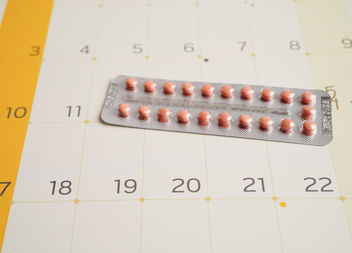4 Things to Know About Popular Birth Control Methods
September 28, 2021There are over 45 million women between the ages of 15 and 49 years old who are sexually active and do not wish to become pregnant. And, around 5% of women who are of reproductive age have an unintended pregnancy each year. According to studies, the United States has a higher unintended pregnancy rate compared to other developed countries, although teen birth rates are at an all-time low. That being said, pregnancy prevention is an important topic of discussion across the nation.

The Inside Rx Blog
Get the Inside Scoop on tips & tricks that may help your family save on prescriptions!
Subscribe to stay up to date with the latest news and tips
There are several contraceptive options available on the market, with some of the most commonly known being condoms, the pill, and the patch. But, are these the most commonly used forms of contraception?
1. The pill is the most used birth control method among women aged 20 to 29 years old
Around 20% of women aged 20–29 currently use the pill. In those using a combined contraceptive pill containing an estrogen and progestin, the chance of pregnancy is less than 1% with perfect use. In those using a progestin-only pill, the chance of pregnancy is approximately 1%. Some birth control pills that can stop menstruation completely have been developed, and they are designed to be taken continuously for months at a time.
Every person’s body and situation is different and individuals should consult their doctor to determine their most effective contraception method.

How to Handle a Drug Price Increase (After Your Plan Resets)

Preparing for 2026: Prescription Savings Trends & Planning Tips

Tips for Staying Healthy During Holiday Travel

GLP-1s in Employee Health Plans: Cost Forecasts & Mitigation Tactics
2. The IUD is the most effective form of birth control
Intrauterine devices (IUDs) include the copper IUD and hormonal IUDs, such as Mirena, Skyla, and Kyleena These devices are inserted into the uterus by a physician and can be effective for 3 to 10 years. They work by preventing fertilization and have over a 99% effective rate. Around 8% of women aged 15 to 49 years old use an IUD as a form of birth control.
3. You can still have kids down the line after stopping birth control
One long-term study found that the use of birth control pills has no negative effects on fertility. Among the 4,000 women tested, most women were able to conceive within six months to a year after stopping birth control pills. While women may experience temporary changes in their menstrual cycle after discontinuing birth control, some women have been able to conceive within three months of stopping birth control pills.
4. Birth control methods are accessible but can still be expensive
One-third of adult women in the United States have trouble paying for prescription birth control methods, which has led to inconsistent use of birth control. Copays for birth control pills can reach over $600 per year, and without insurance, the cost of birth control can be even higher. The cost of an IUD can be up to $1,000 or more in a year. Birth control costs can be hard to cover when also taking into account the cost of the doctor’s visit.
Atorvastatin Calcium
$ 7.53Metoprolol Succinate
$ 7.67Inside Rx Can Help
If you’re having trouble covering the cost of birth control due to being uninsured or underinsured, you can use a prescription discount card, like Inside Rx. You might be able to save up to 80% off the cost of birth control with the Inside Rx prescription discount card. Whether you’re uninsured or underinsured, you can compare the prices of your prescription birth control, or other medications, using the Inside Rx prescription search tool on the website. Simply, enter your medication name, enter your zip code and compare prices at pharmacies near you. Accepted at over 60,000 pharmacies across the United States, the Inside Rx card can help make contraception and birth control methods more affordable.
For more about Inside Rx, visit the Help section.